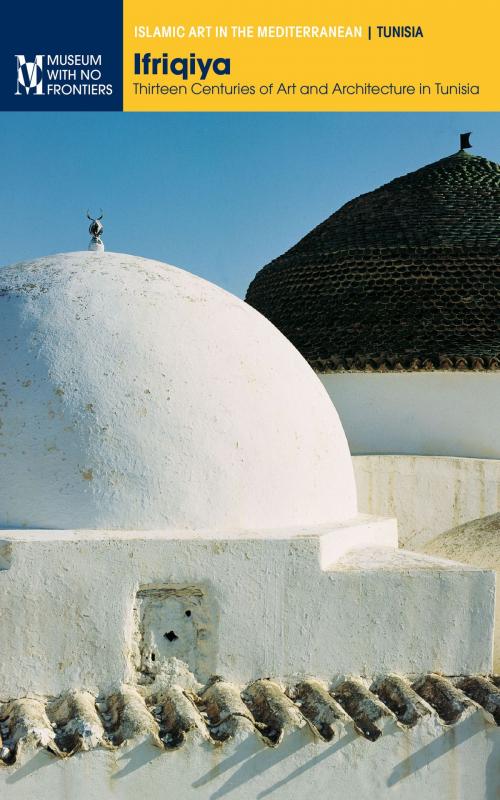Ifriqiya: Thirteen Centuries of Art and Architecture in Tunisia
Nonfiction, Art & Architecture, General Art, Travel, History| Author: | Jamila Binous, Naceus Baklouti, Aziza Ben Tanfous, Kadri Bouteraa, Mourad Rammah, Ali Zouari | ISBN: | 9783902782199 |
| Publisher: | Museum With No Frontiers, MWNF (Museum Ohne Grenzen) | Publication: | December 15, 2009 |
| Imprint: | Language: | English |
| Author: | Jamila Binous, Naceus Baklouti, Aziza Ben Tanfous, Kadri Bouteraa, Mourad Rammah, Ali Zouari |
| ISBN: | 9783902782199 |
| Publisher: | Museum With No Frontiers, MWNF (Museum Ohne Grenzen) |
| Publication: | December 15, 2009 |
| Imprint: | |
| Language: | English |
Tunisia offers a synoptic and chronological vision spanning thirteen centuries of Islamic History. After the creation of Kairouan at the rise of the Islamic era during which time local traditions were enriched with the distant souvenir of Samarra successive dynasties embellished the architectural language of the area with their own unique artistic expressions. The Aghlabid monuments, for example, offer the dual physiognomy of Christian art revisited by oriental craftsmanship, which was in turn inspired by the artistic language of Egypt and Mesopotamia. The ornamental innovations of the Fatimid caliphate that followed, was then a source of inspiration re-visited during the Zirid era. The long centuries of Hafside prosperity, stimulated by the arrival of exiled Andalusians, signalled the creative pinnacle of an art of symbiosis: Hispanic-Maghreb art. This successful cross-fertilisation of local austerity married with Cordoban-Umayyad splendour, would in itself promote an incredible architectural renewal until Ifriqiya became part of the Ottoman Empire. Tunis medina is a good place to witness the creation of a typically Muslim civic model, facilitating an image in the mind’s eye of the luxury of daily life in the pleasure palaces of the surrounding environment. Between Bizerte and Ghar el Melh, the emphasis is placed on the prosperous Andalusian villages, whereas on the last promontories of the Djebel Dyr, El-Kef illustrates the dual destiny, military and spiritual, of a highly influential centre for Sufism. The princely towns of Raqqada and Mahdia and the ribat towns of Monastir and Sousse offer yet other manifestation of artistic exuberance. Sfax, being Tunisia's true gate to the Levant and the most southern nomadic land, witnessed the caravanserais (of Gafsa, Tozeur, Nefta) and the troglodytic ksours that offer so perfect a response to the hostility of a semi-desert environment and, in contrast, the serene functionality of Jerbian architecture which summarises the rigorous authenticity of insular Ibadism. Tunisia unravels each of its expressions in a synchronous spiral, a revolution that encouraged the continuity of previous traditions.
Tunisia offers a synoptic and chronological vision spanning thirteen centuries of Islamic History. After the creation of Kairouan at the rise of the Islamic era during which time local traditions were enriched with the distant souvenir of Samarra successive dynasties embellished the architectural language of the area with their own unique artistic expressions. The Aghlabid monuments, for example, offer the dual physiognomy of Christian art revisited by oriental craftsmanship, which was in turn inspired by the artistic language of Egypt and Mesopotamia. The ornamental innovations of the Fatimid caliphate that followed, was then a source of inspiration re-visited during the Zirid era. The long centuries of Hafside prosperity, stimulated by the arrival of exiled Andalusians, signalled the creative pinnacle of an art of symbiosis: Hispanic-Maghreb art. This successful cross-fertilisation of local austerity married with Cordoban-Umayyad splendour, would in itself promote an incredible architectural renewal until Ifriqiya became part of the Ottoman Empire. Tunis medina is a good place to witness the creation of a typically Muslim civic model, facilitating an image in the mind’s eye of the luxury of daily life in the pleasure palaces of the surrounding environment. Between Bizerte and Ghar el Melh, the emphasis is placed on the prosperous Andalusian villages, whereas on the last promontories of the Djebel Dyr, El-Kef illustrates the dual destiny, military and spiritual, of a highly influential centre for Sufism. The princely towns of Raqqada and Mahdia and the ribat towns of Monastir and Sousse offer yet other manifestation of artistic exuberance. Sfax, being Tunisia's true gate to the Levant and the most southern nomadic land, witnessed the caravanserais (of Gafsa, Tozeur, Nefta) and the troglodytic ksours that offer so perfect a response to the hostility of a semi-desert environment and, in contrast, the serene functionality of Jerbian architecture which summarises the rigorous authenticity of insular Ibadism. Tunisia unravels each of its expressions in a synchronous spiral, a revolution that encouraged the continuity of previous traditions.















